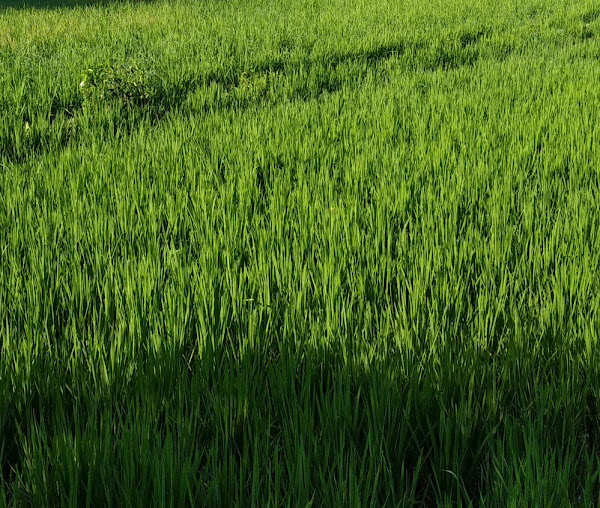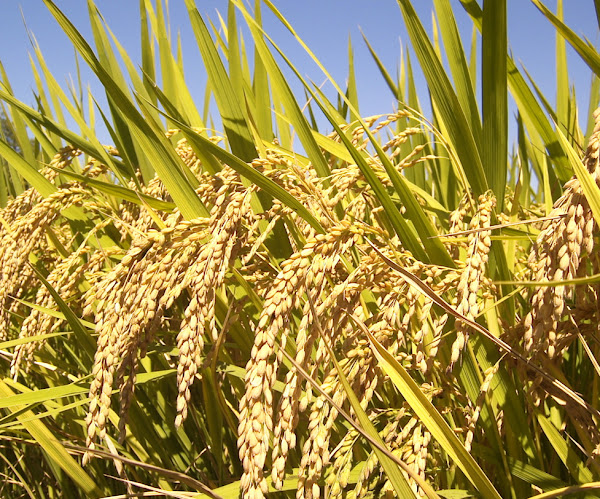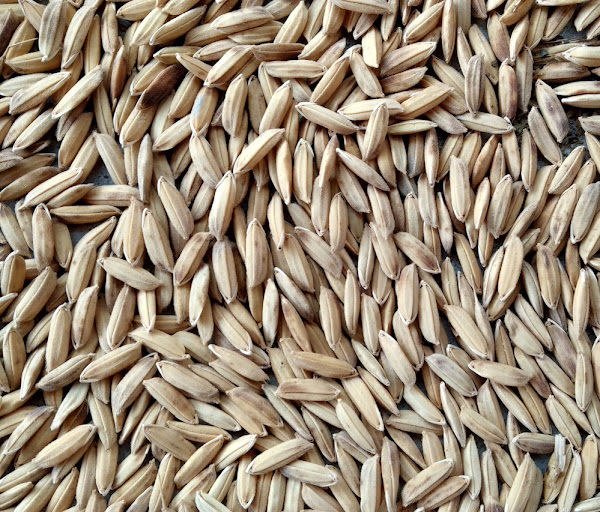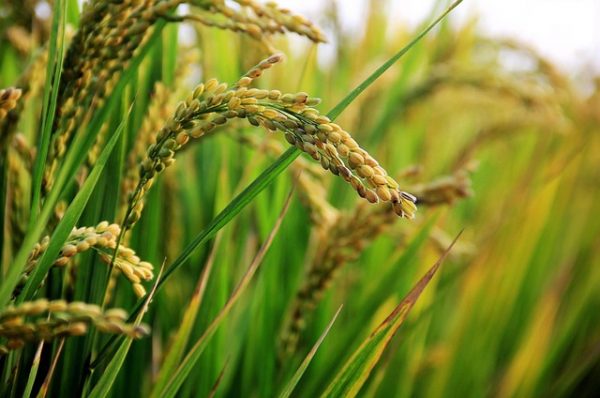Rice Farming At Ohafia Nkporo Abia State
by Farm Manager
-
₦250,000,000
Funding Goal -
₦0
Funds Raised -
0
Days to go -
Campaign Never Ends
Campaign End Method
Campaign Story
Here is what your investment covers
- Renting the plots of land on your behalf.
- Insurance to cover the farms throughout the farming cycle.
- Farm inputs including high-quality seeds, fertilizers and farm tools.
- Farmers labour to work on the farm.
- Logistics to get the harvested Rice from farm to market.
- 15% reward at the end of 8 months farming circle.
- Your invested funds are backed by real landed equity.
Details On Rice Farming
Rice farming is very common and popular throughout the world. And rice is the number one and most widely consumed staple food in the world. Rice is consumed as a staple food by a large part of the world’s human population. Rice is actually the seed of the grass species Oryza sativa (or Oryza glaberrima for African rice). Rice (a monocot) is normally grown as an annual plant. But in the tropical areas, the rice plants can survive as a perennial and can produce a ratoon crop for up to 30 years.
How is Rice Grown
Rice farming is very easy and simple, and you can start growing rice if you are a beginner. Rice can be grown in different types of soil and different environment, depending on the availability of water. Here we are describing everything about rice farming from planting, caring to harvest.
Select a Good Location
First of all, you have to select a very good location for rice farming. Rice plants are versatile, and they can be grown on a wide variety of soil types with low permeability and pH varying from 5.0 to 9.5. The rice plants require full sun, so the selected land should have access to full sun.

Depending on the availability of water, rice can be grown in many different environments. The plants can be grown in both irrigated and rainfed method, and they can also survive to flood. However, favourable rice-growing environments are;
- Coastal wetland
- Deepwater or floating rice
- Lowland, irrigated (rice is grown in both the wet season and the dry season)
- Lowland, rainfed (which is drought-prone, favours medium depth, waterlogged, submergence and flood-prone)
- Upland rice
Preparing the Soil
Rice farming is possible in a wide range of soil types. Sandy loam to loamy sand to silty loam to clay loams, silty to clayey loam soils with low permeability, free of sodicity are considered best for rice farming. Whatever the soil type is, you have to prepare it perfectly for growing rice. You have to ensure that the soil is in it’s best physical condition for crop growth and the soil surface is level.
Land preparation for rice farming involves ploughing and harrowing to ’till’ or dig-up, mix and level the soil. Tillage helps with weed control, and also allows the seeds to be planted at the right depth. And then you have to level the surface for reducing the amount of water wasted by uneven pockets of too-deep water or exposed soil.
Semi-dry, dry and wet systems are generally followed in rice farming. The dry and semi-dry systems of rice farming depend on rains and generally do not have supplementary irrigation facilities. On the other hand in wet rice farming system, the rice crop is grown with assured and abundant water supply either by rain or by irrigation.
Wet System: Our rice farming uses a wet system. In a wet system, the rice is thoroughly ploughed to create a puddle with 3-5 cm of standing water in the field. The ideal depth of puddling is found to be around 10 cm in clay soils, clay-loamy soils. Level the land after puddling, and doing this is important to facilitate a uniform distribution of water and fertilizers.
Best Time for Rice Farming
Rice can be grown at any time of the year. The seeds will germinate and the plants will grow well as long as the temperature is between 16 °C and 30 °C (although the plants can survive as high as 40 °C).
Choose a Variety
There are many varieties (actually too many varieties) or cultivars of rice available throughout the world. Rice varieties and types are divided into different categories depending on culinary preferences, characteristics and also vary regionally. Depending on the region, there are hundreds or thousands or even more rice varieties available and new varieties are being developed continuously.

In case of culinary preferences, the varieties of rice are generally classified as long, medium and short-grained. Long-grain rice tends to remain intact after cooking. The medium grain rice becomes more sticky and is generally used for sweet dishes. And the short-grain rice is often used for rice pudding. And within these 3 varieties, there are several cultivars available around the world.
Purchase Seeds
After selecting your desired variety, purchase seed from any of your local suppliers. Consider purchasing good quality, high yielding and disease-free seeds from any of your local govt. or private seed manufacturer.
Seeds per Acre
The exact amount of seeds depend on the rice variety and also on the method you are going to follow for rice farming. Generally, 10-12 kg seeds will be enough for direct sowing, and 25-30 kg will be enough for transplanting method.
Planting
The rice plant is grown in two ways. They are grown either by direct seeding or by transplanting. Whichever system you use, you should treat the seeds by fungicide/insecticide before sowing.
Direct Sowing: Indirect seeding system, you have to broadcast dry seed or pre-germinated seeds by hand or by using a machine. The dry seeds are manually broadcasted onto the soil surface in rainfed and deepwater ecosystems and then incorporated either by ploughing or by harrowing while the soil is still dry. But the seeds are generally pre-germinated prior to broadcasting in the irrigated areas. This is a very easy method and requires less labour.
Transplanting: Transplanting is the most popular rice planting method across Asia. In this system, the seedlings are grown in a prepared seedbed and then transplanted to the main wet field. This system requires less seed and it is an effective method for controlling weeds. Transplanting method requires more labour, although today there are some machines available for planting the transplants which will reduce the use of labor.
Caring
Taking additional care is a must for rice farming. Rice is not a plant and then harvest the crop, and the plants require lots of care. Here we are describing more about the caring process for growing rice.
Fertilizing: Applying additional fertilizers is needed for maximum yield. Don’t apply all these chemical fertilizers into the soil at once while preparing the soil. Apply all the organic fertilizers and half of the chemical fertilizers during preparing the soil. And then apply remaining half chemical fertilizers twice with 30 days interval.
Watering: Cultivated rice is extremely sensitive to water shortages. Maintaining a flooded condition in the field is good for ensuring sufficient water during the growth period (do this especially for lowland rice farming). In rainfed rice farming conditions, you don’t have to think much about it and nature will do the rest. But in case of dry or semi-dry conditions, you have to water the field regularly. Remember, you must have to keep the field flooded for up to 2 weeks after transplanting.

Controlling Weeds: Controlling weeds is very important for rice farming. Weeds consume nutrients from the soil, so you have to remove them from the field. Manual weeding or chemical weeding both are used for commercial rice farming business. Consult with your local agriculture specialist for having good recommendation.
Pests and Diseases
Rice plants are susceptible to some pests and diseases, just like many other commercial crops. The rice plant has a wide array of ‘enemies’ in the field including rodents, harmful insects, viruses and diseases. Understanding the interactions among pests, natural enemies, host plants, other organisms, and the environment allows farmers to determine what if any pest management may be necessary. It’s always good to keep good contact with an agriculture specialist in your area for controlling all these pests, diseases or other problems.
Harvesting
Depending on the variety, the rice plants reach maturity at around 105 to 150 days after crop establishment. You can start harvesting the crop when the moisture content into the grain reduces to 20%-25%. Rice harvesting activities include cutting, stacking, handling, threshing, cleaning and hauling. You can do all the harvesting activities either by hand or by using a machine. And remember, good harvesting methods help to maximize grain yield and minimize grain damage and deterioration.


Reviews
There are no reviews yet.